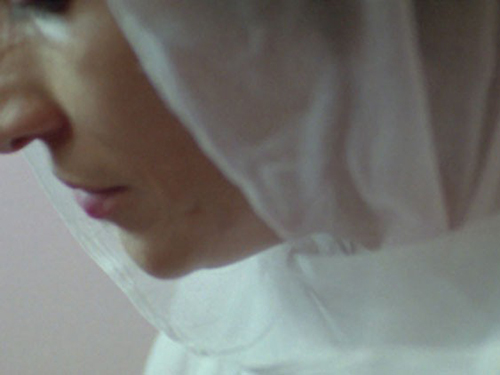
“Hugonnier travelled to the Panjsher Valley to make a film investigating the historical agency of its landscape. Long described as an earthly paradise, the valley had been broached by neither Soviet nor Taliban forces. Irrigated by streams running from the impenetrable surrounding mountains, it had remained a natural, self-sustaining Utopia, protected from political upheavals. Hugonnier intended to take a camera to a look-out point and film a 360º pan of the valley.
The project began with the acknowledgement that landscape is never innocent, but, as Hugonnier learnt, nor is the means of representing it. Locals informed her that the route to the viewpoint was blocked by a landslide. Remaining in the valley, she began to question her ambition: to make the panoramic shot as planned would have been to exercise a form of control through surveillance. It would have been to rupture the very resistance she wanted to describe.
Giving up, Hugonnier and crew returned to the capital, where the new utopia of Western capitalism was taking shape. [...]”
Mark Godfrey1
“I see landscape as a form of cultural mediation, as a social contrast, and I try to understand how they have shaped and informed history, and vice versa. Since the 19th century tools like cinema and photography – which were new modes of analysis and perception that echoed the expansionist mission of the time – have established a particular ideological and perceptual point of view. I have often chosen far away places to have a conversation about different forms of observation. Ariana (2002) which was shot in Afghanistan, questions the military gaze; The Last Tour (2004) which is the second film of the trilogy, shot in the Swiss Alps, questions the tourist gaze; Travelling Amazonia (2006) shot in Brazil is what has made a gaze possible (i.e. the rationalisation of space through map making); Territory I, II, III (2004) which was shot in Palestine and Israel was about the way architecture could become a military optical device; The Cristal Palace (2009) was about the gaze of a viewer in a Museum, and finally my last film Apicula Enigma (2013) is about the naturalistic gaze. These topics define a quest to understand how things are observed, question systems of representation and challenge their conventions. And most of the time these films loop back and become a way to question the observer, her or his point of view as a westerner. It is within this framework that the quest is to define subjectivity, a new one.”
Marine Hugonnier2
“In Ariana, which Hugonnier describes as an essay about distances, space and scale, the panoramic view of a landscape becomes an object of desire. The film follows the artist and her crew in their attempts to reach television hill, a high vantage point from which to capture a panorama of the historic Panjsher Valley in Afghanistan. The discovery that only Afghani government officials have access to this vista transforms the intangible view of a landscape into a politically charged subject. As Hugonnier writes, ‘We wanted to get to the best viewpoint, to see in a glance how this landscape made the history of the valley possible.’ Although they ultimately succeed in reaching this perspective, Hugonnier declines to film from this location, transforming her film into a discussion of the panorama as a means of control and even propaganda.”
e-Flux3
- 1Mark Godfrey, “Marine Hugonnier Chisenhale Gallery/MW Projects, London, UK,” Frieze, 7 June 2003.
- 2Marine Hugonnier in an interview with Anne-Sophie Dinant: “Marine Hugonnier ‘The Secretary of the Invisible’, Vdrome.
- 3e-Flux, “Live Cinema/Marine Hugonnier: Trilogy,” 18 April 2007.

